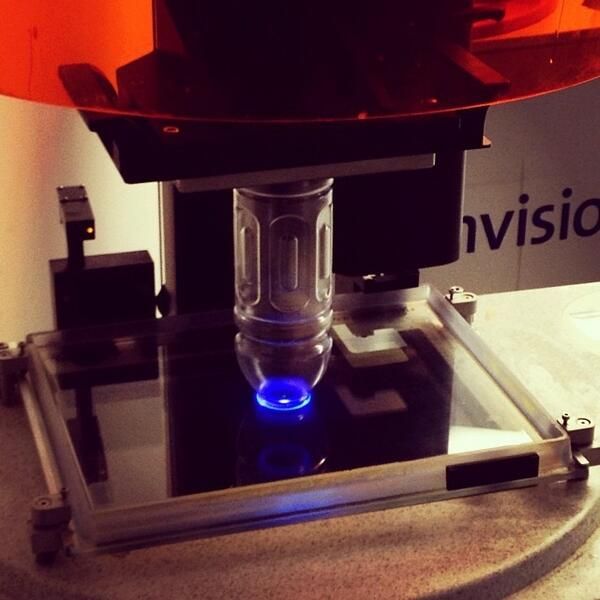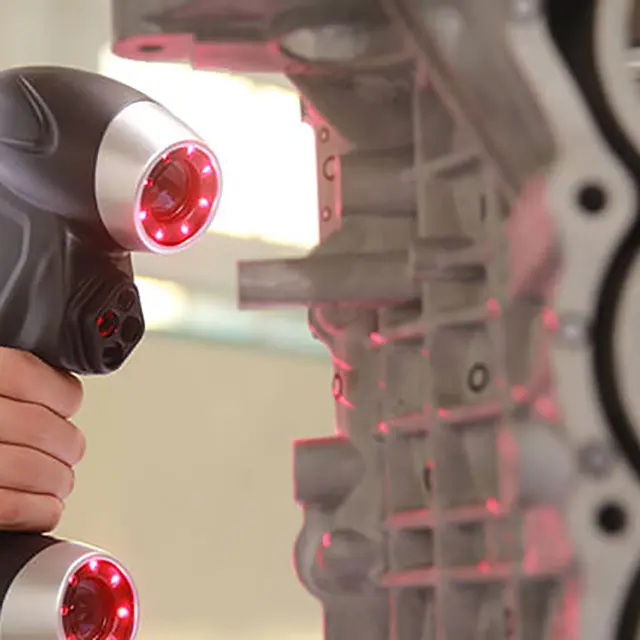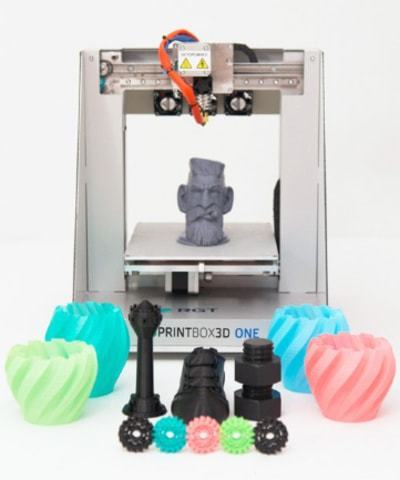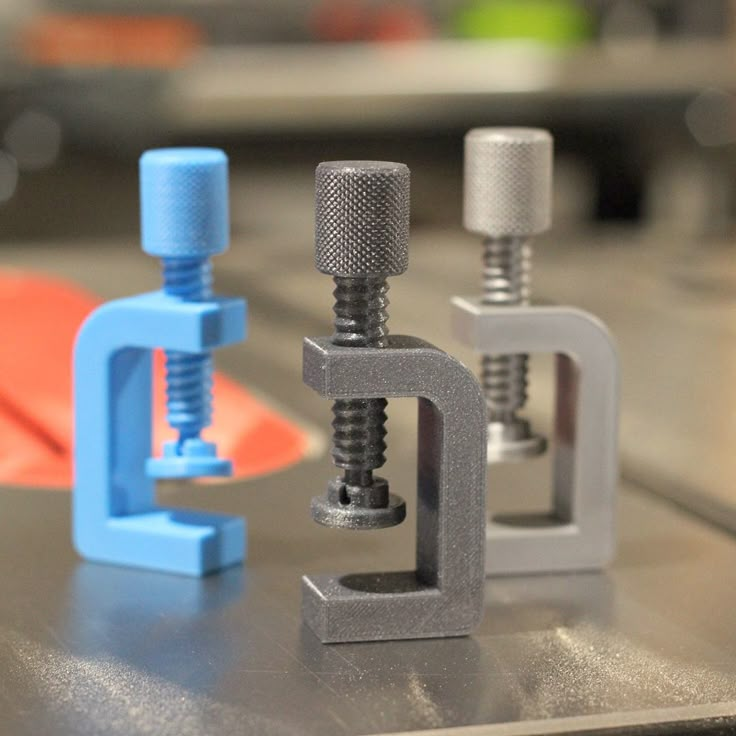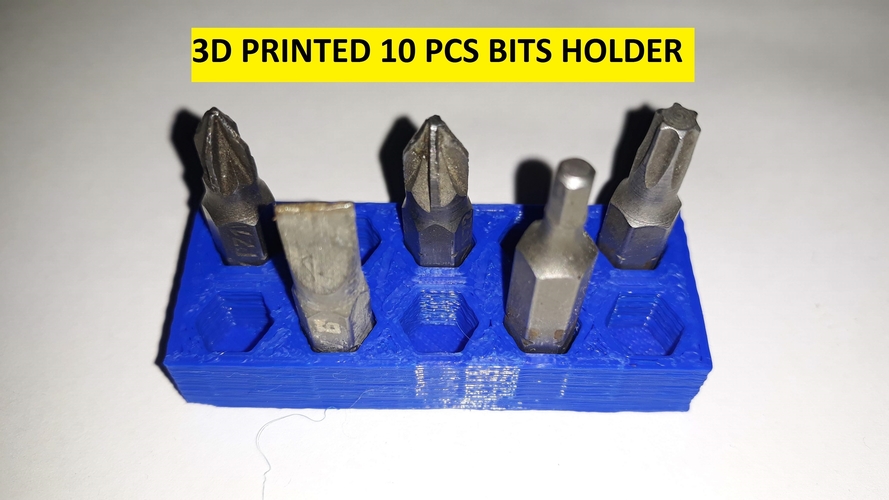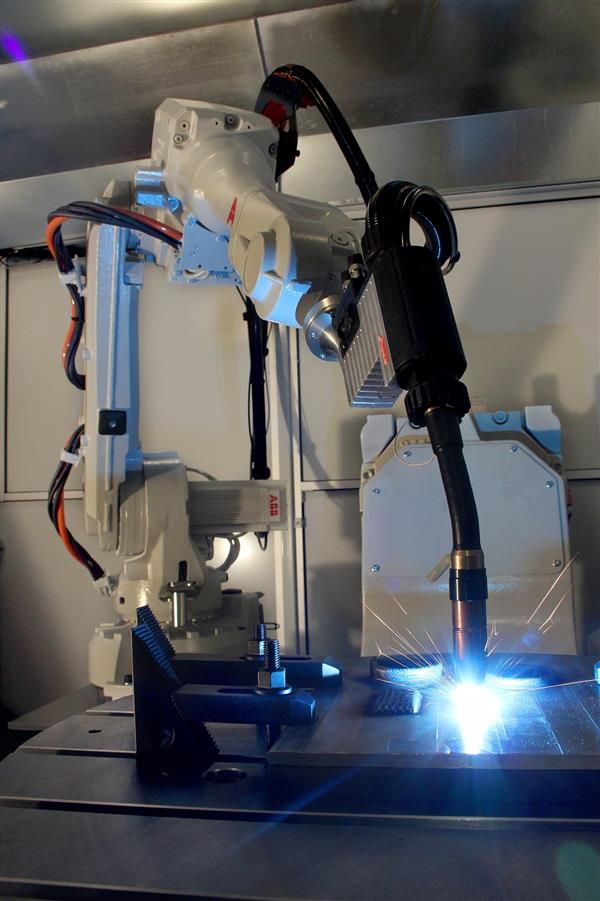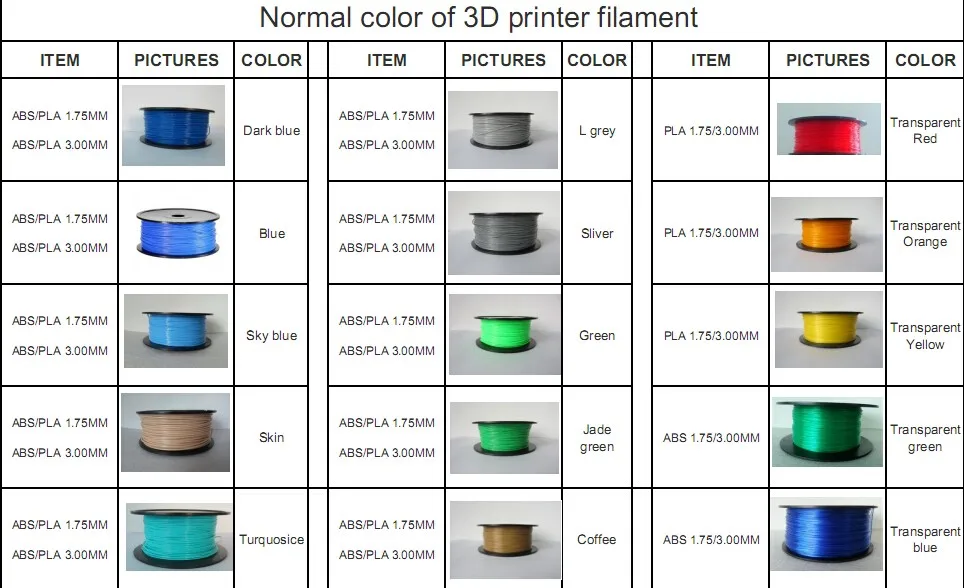Perfactory 3d printer
3D Printers | Desktop, Professional and Industrial
ETEC offers a variety of 3D printing systems with the ability to mass produce polymer parts with the speed and quality needed for demanding end-use applications. ETEC printers deliver parts with exceptional accuracy, superior part properties, fine feature detail, and smooth surface finish at a scale and cost that is competitive with traditional manufacturing techniques like injection molding.
·
Printers
From desktop production of small parts to 24/7, lights-out manufacturing to large, production-grade printers, ETEC solutions address a wide range of production scales.
Materials
With more than 190 materials, from hard plastics to high-performance elastomers to high-temperature materials, ETEC’s material portfolio can address a huge range of applications.
High Accuracy + Feature Detail Smooth Surface Finish High Throughput Superior Part Properties Quality Materials Ease of Use
High Accuracy + Feature Detail
ETEC’s advanced DLP printing process delivers best-in-class part accuracy and feature detail down to the micron level.
Smooth Surface Finish
ETEC DLP parts deliver best-in-class surface finish with less than 1um Ra. This exceptional smoothness is critical to compete with plastic injection molding and is the result of more than 10 years of research & development devoted to perfecting the DLP process.
High Throughput
ETEC printers enable throughput [up to 100x legacy FFF 3D printing processes] to deliver parts at volumes and costs competitive with traditional manufacturing techniques like injection molding.
Superior Part Properties
ETEC combines advanced hardware features such as high-powered projectors and custom-designed optics with materials that leverage long-chain chemistry to deliver truly isotropic material properties critical for end-use applications.
High-performance Materials
With a wide array of materials, including both proprietary and third-party qualified resins, ETEC materials deliver mechanical properties required for for end-use parts across a range of industries and applications.
Easy To Use
ETEC solutions are designed for ease of use from the ground up, with intuitive software that simplifies the process of setting up and starting a print and the ability to switch between materials in just minutes, users can produce end-use parts tailored to their application with ease.
Trusted By Industry
· Systems
Our Systems
- Printer technology
- Build envelope
- Models
- XY Resolution
- Z Resolution
- Printer technology
- Build envelope
- Models
- XY Resolution
- Z Resolution
- Printer technology
- Build envelope
- Models
- XY Resolution
- Z Resolution
- Printer technology
- Build envelope
- Models
- XY Resolution
- Z Resolution
- Printer technology
- Build envelope
- Models
- XY Resolution
- Z Resolution
· Case Studies
3D Composites
Additive manufacturing service bureau using 3D printing to create parts for 747 jets, satellites, medical devices and more.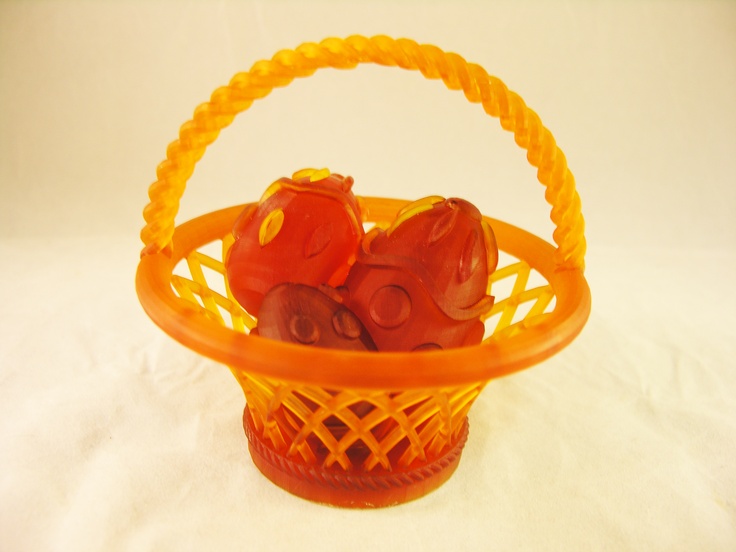
Shapeways
Industrial service bureau creating prototype parts for everything from consumer goods to medical devices.
Products - ETEC
Skip to content
Team DM
Platforms
Metal and composites 3D printing 3D printing solutions for health care Industrial-grade polymer 3D printing™
Sand and tooling 3D printing solutions 3D printers for sheet metalMaterials
Breakthrough photopolymer development Advancing 3D printed upcycled woodApps & More
The hydraulic additive manufacturing experts Multi-material powder recoating technology Driving digital transformation in dentistry· Systems
Our Systems
- Printer technology
- Build envelope
- Models
- XY Resolution
- Z Resolution
- Printer technology
- Build envelope
- Models
- XY Resolution
- Z Resolution
- Printer technology
- Build envelope
- Models
- XY Resolution
- Z Resolution
- Printer technology
- Build envelope
- Models
- XY Resolution
- Z Resolution
- Printer technology
- Build envelope
- Models
- XY Resolution
- Z Resolution
· Key Features
Why ETEC?
High Accuracy + Feature Detail
High-resolution printing with Industrial DLP Chips
DLP chips come in a variety of configurations, from industrial chips designed for 3D printing to less expensive chips intended for video projectors found in many offices.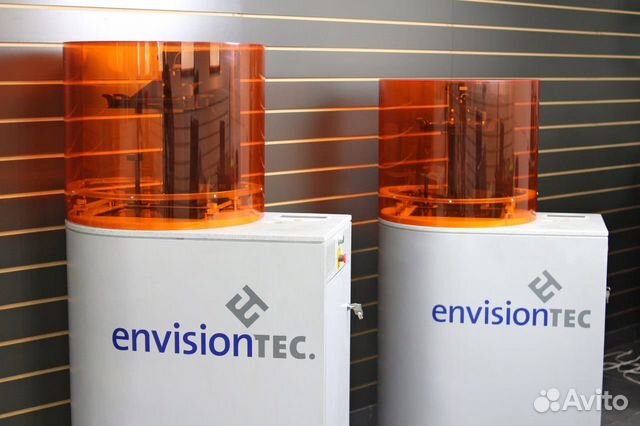 While some DLP print technologies choose to use these inexpensive chips to reduce costs, ETEC only uses true industrial DLP chips, which allow for higher contrast ratios, resulting in finer part details.
While some DLP print technologies choose to use these inexpensive chips to reduce costs, ETEC only uses true industrial DLP chips, which allow for higher contrast ratios, resulting in finer part details.
High-resolution printing with CDLM Domeless Printing
https://etec.desktopmetal.com/wp-content/uploads/2022/01/MS_DM_EnvisionTec_E1_CDLM_320.mp4
To print continuously (without peeling) requires flowing oxygen through a permeable film just above the print bed to create a “dead zone”. Within this ‘dead zone’ the polymerization process is inhibited ensuring the layer being printed adheres to the layer above and not the printing bed film. This ‘dead zone’ is what enables continuous printing, where the build plate can continually move in the Z axis, leading to faster, more reliable prints.
On competitor “dead zone” printers, by comparison, air pressure from the flowing oxygen causes the film to dome up. Printing parts on that domed surface greatly impacts resolution along the Z axis, as well as the ability to print flat parts on the build plate.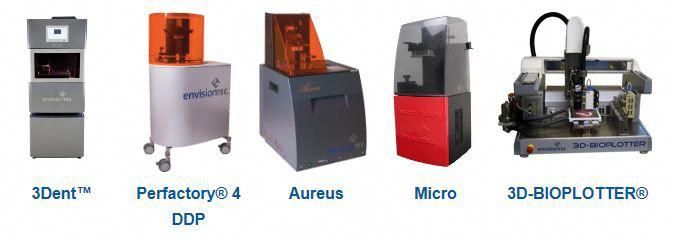
ETEC’s CLDM technology uses over 200,000 pillars to hold the film perfectly flat, resulting in significantly better Z-axis resolution and allowing for the printing of flat parts straight to the bed with no supports.
Smooth Surface Finish
Smooth surface finish with Pixel Shifting
Projectors deliver light in square-shaped pixels, which creates volumetric pixels, or voxels, as resin cures.
Along curved edges, however, square pixels create a jagged edge – what the industry often refers to as “stair stepping.”
As the size of printed objects and build volumes increase, stair stepping becomes more pronounced.
ETEC printers use patented pixel-shifting technology to move pixels at the edge of parts half a pixel in both the X and Y directions, cutting stair-stepping by half and delivering significantly improved surface finish.
Smooth surface finish with Pixel Tuning
Anti-aliasing technologies are ubiquitous today — used virtually everywhere digital images appear, from cell phones to TV screens and more.
ETEC brings the same technology to the 3D realm by using anti-aliasing techniques at the edge of print layers to improve surface finish. Since voxels grow from the center of a part to the edges, applying less power to these outside pixels ensures they only grow to the desired edge of the part and not beyond. (Less power = slower polymerization growth)
Called pixel tuning, that process dramatically reduces pixelation on the edges of parts, resulting in a surface finish that requires little to no post-processing.
Smooth surface finish with CDLM and Top-down Printing
https://etec.desktopmetal.com/wp-content/uploads/2022/02/top-down-1-1-1.mp4
Most forms of DLP require each layer to be peeled off the film between each layer as the build plate moves up. As each layer is peeled, a small lip is formed on the part, which roughens the surface finish.
The patented CDLM process of the Envision One and top-down printing of the Xtreme 8K eliminate the need for peeling.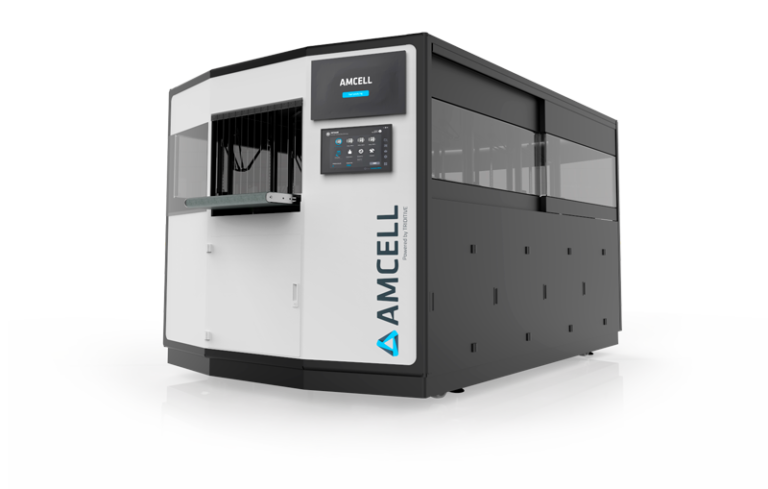 With no peeling, lipping does not occur, resulting in a significantly better surface finish than other DLP processes.
With no peeling, lipping does not occur, resulting in a significantly better surface finish than other DLP processes.
During top-down printing, parts are fully submerged in the resin. With the parts supported by the resin, fewer support structures are needed, ultimately resulting in a better final surface finish.
High Throughput
High throughput via Large Build Volumes
With a variety of build volumes, ETEC DLP printers are capable of printing a wide variety of part sizes, from large single parts to high volumes of smaller parts in a single build.
Since build times are entirely dependent on Z-axis height, having large build volumes in the X- and Y-axes allow for potentially thousands of parts to be printed at once, in the same time required to print one part.
High throughput via Faster Polymerization
DLP build times are determined by Z-axis height because much of the print time is related to the time it takes to cure, or polymerize, each layer.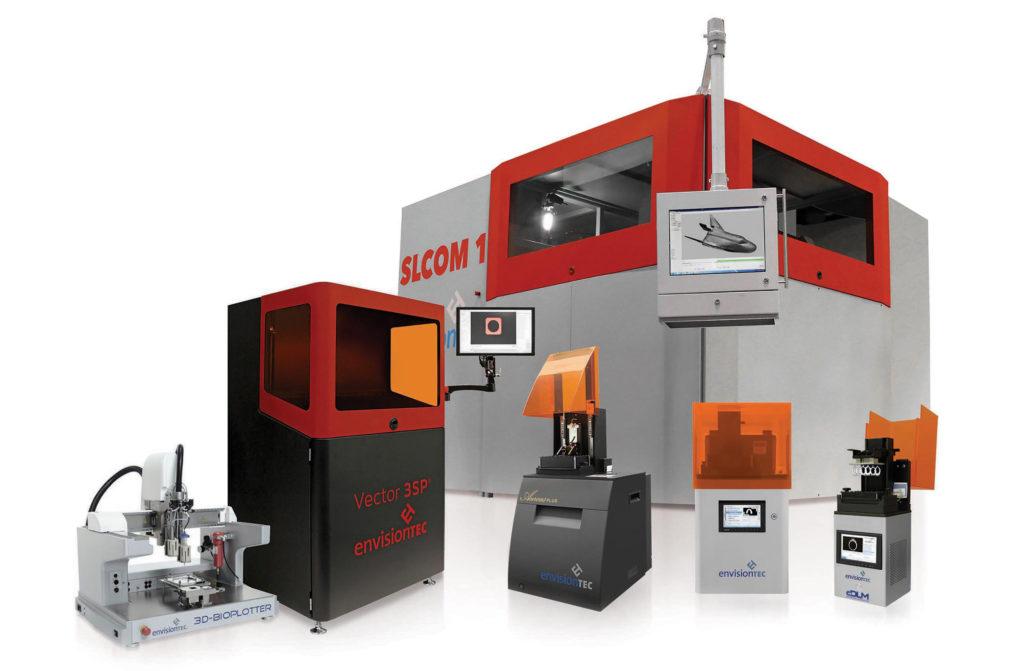
ETEC’s DLP technology enables the fastest layer polymerization through the use of the highest-power projectors and a highly efficient optical train.
By allowing for shorter exposure times per layer, ETEC systems ultimately deliver shorter print times and higher throughput.
High throughput via CDLM or Top-Down Printing
https://etec.desktopmetal.com/wp-content/uploads/2022/02/MS_DM_EnvisionTec_E1_CDLM_1080-1.mp4
Many forms of DLP require each layer to be peeled off the film as the build plate moves up between layers. This peeling takes time and must be done slowly to ensure parts are not damaged.
The patented CDLM process of the Envision One and top-down printing of the Xtreme 8K eliminate the need for peeling, reducing the time needed to print each layer and overall print times.
High throughput via Lights-Out Manufacturing
https://etec.desktopmetal.com/wp-content/uploads/2022/01/MS_DM_EnvisionTec_X8K_320_v043. mp4
mp4
Get the most out of your ETEC DLP system with high throughput, 24/7 manufacturing designed to rival the volumes of traditionally-manufactured plastic parts.
An automated system for lights-out manufacturing and a dashboard for monitoring all operations and remote control of each machine, further increase uptime for each system.
Superior Part Properties
Superior part properties with New Backbone Chemistry
For decades, polymer 3D printing has been used for prototyping and tooling applications, but the technology hasn’t been widely adopted for the production of end-use parts.
One key to unlocking those end-use applications is the ability to create long-chain molecules in printed parts, resulting in significantly improved material properties, including isotropic strength – a key factor for many end-use parts.
ETEC printers and the DLP process include a number of hardware features – including high-powered projectors, custom-designed optics that minimize power loss– ensuring the creation of those long-chain molecules.
Superior part properties with Isotropic Material Properties
Isotropic material properties are essential for end-use components, but until recently have rarely been achievable with polymer 3D printing.
With FDM printing, very weak mechanical – not chemical – bonds form between each layer, resulting in anisotropic properties, or greater weakness along the Z axis than on the X or Y axes. This lack of uniformity has long kept FDM parts from being used as end-use parts.
With DLP printing, by comparison, each layer is left in a slightly uncured state, allowing it to chemically bond with the next layer as it prints. That bonding helps to create long chain polymers throughout parts, resulting in truly isotropic parts which are strong enough for end-use applications, and rival the properties of injection molded parts.
Superior part properties with 385nm Wavelength
All UV-curable resins require the addition of photoinitiators to start the polymerization process. Resins cured with 385-nm wavelength light require significantly less than many other materials, because the 385-nm wavelength is where absorption peaks for most common photoinitiators. Limiting the amount of photoinitiator in a part is particularly important for clear materials, because higher concentrations of photoinitiator result in parts with a yellow tint.
Resins cured with 385-nm wavelength light require significantly less than many other materials, because the 385-nm wavelength is where absorption peaks for most common photoinitiators. Limiting the amount of photoinitiator in a part is particularly important for clear materials, because higher concentrations of photoinitiator result in parts with a yellow tint.
Quality Materials
Quality materials via Industry-Leading Material Suppliers
ETEC is determined to provide its customers with the best materials in the 3D printing industry. To do it, they utilize a world-class material science team to produce ETEC-exclusive materials, and partner with world-leading material suppliers. The printer systems are designed to be selectively open, giving users flexibility.
Quality materials via 190+ qualified materials
With more than 190 materials, from hard plastics to high-performance elastomers to high-temperature materials, ETEC’s material portfolio can address the widest range of applications.
Quality materials that break the stigma of resins
Though they have been available to print for decades, resins have long been stigmatized as brittle and possessing mechanical properties that deteriorate quickly. A new generation of resins is emerging to erase that stigma, and open the door to a host of new applications.
The superior properties delivered by this new generation of resins includes vital features for end use parts, including mechanical properties that remain stable over time, highly ceramic-filled materials for added toughness and improved surface finishes, and high-temperature materials without brittleness, which are ideal for demanding environments.
In addition to those materials, ETEC offers resins with high wax content, making them ideal for casting jewelry and other products.
Easy To Use
Easy to use Software-Controlled Workflow
https://etec.desktopmetal.com/wp-content/uploads/2022/02/2022-01-24_15-55-16-3.mp4
The software that powers all ETEC printers, Envision One Rapid Prototype (RP) simplifies the process of setting up and starting a print.
With optimized support strategies for every material and automatic part orientation calculation, Envision One RP helps ensure printing success. For users who want more control over prints, the software allows for manual editing of a range of support parameters, including tip thickness, beam thickness, beam spacing and more.
To help increase productivity, prints can even be started remotely.
Easy to use Fast Material Switching
https://etec.desktopmetal.com/wp-content/uploads/2022/02/materiial-switch-1.mp4
With the ability to swap between any of ETEC’s 190-plus materials in just minutes, users can tailor their material choice to each specific application.
All ETEC materials come in a single pot, with no two-pot mixing required, simplifying the process of adding resin to the printer.
While the short shelf life of many competitor resins means they must be used within hours of being opened, all ETEC materials feature shelf lives of more than a year, ensuring no material ever goes to waste.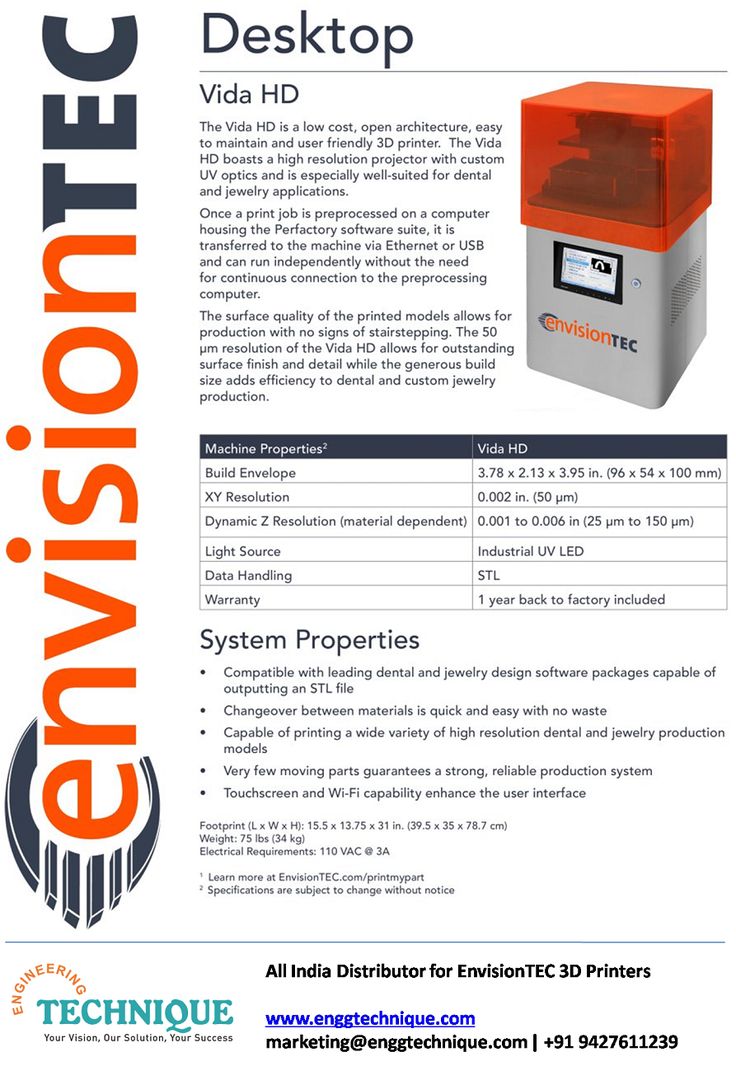
SLM Solutions presented the NXG XII 600, the most productive metal 3D printer
SLM Solutions presented the NXG XII 600, the most productive metal 3D printer
Georgy Serezhkin
Head of Partner Relations Department, Globatech JSC
SLM Solutions, a pioneer in the field of selective laser melting, has officially introduced a new 3D printer - SLM NXG XII 600. The unit is equipped with 12 lasers of 1 kW each and a build well measuring 600x600x600 mm. The NXG XII 600 is the fastest SLM 3D printer on the market, 20x faster than single laser 3D printers. nine0003
SLM Solutions, a pioneer in the field of selective laser melting, has officially introduced a new 3D printer - SLM NXG XII 600. The unit is equipped with 12 lasers of 1 kW each and a build well with a size of 600x600x600 mm. The NXG XII 600 is the fastest SLM 3D printer on the market, 20x faster than single laser 3D printers.
Engine housing printed on SLM Solutions NXG XII 600 3D printer: dimensions - 590x560x367 mm, weight - 15.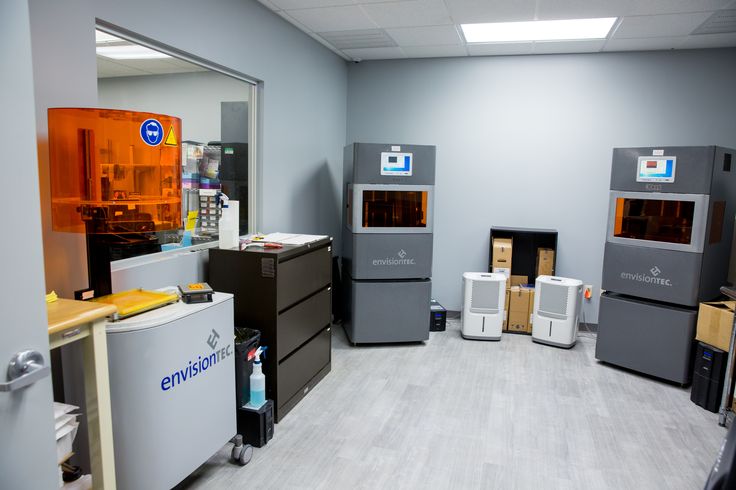 5 kg, material - ALSI10MG, construction time - 21 hours
5 kg, material - ALSI10MG, construction time - 21 hours
Engine housing printed on SLM Solutions NXG XII 600 3D printer: dimensions - 590x560x367 mm, weight - 15.5 kg, material - ALSI10MG, build time - 21 hours
For maximum performance and reliability in SLM NXG XII 600 an innovative solution was applied - the laser spot scaling function. The 3D printer is designed for serial and high-volume printing, including large-sized products, which opens up new opportunities in the automotive and aerospace industries. nine0003
High Performance 12 Laser System
NXG XII 600 Industrial 3D Printer expands SLM Solutions 3D printer range and takes productivity to a whole new level with 12 simultaneous 1 kW lasers, a range of technological innovations and automated features . A radically improved build strategy delivers unrivaled print speeds. SLM Solutions has completely rethought the concept of a mass production 3D printer: The NXG XII 600 has been designed from the ground up and features a new optical scanning system, the most compact on the market. It provides a large overlap and is based on a custom laser scanning system that best fits the build area. All 12 scanners are equipped with a double lens system and have a zoom function, which allows the operator to adjust the laser spot diameter in the focal plane from 80 to 160 microns during the melting process and increase the print speed to 1000 cm3/h or more. Printing the maximum possible number of products in one shorter cycle reduces their cost. nine0003
It provides a large overlap and is based on a custom laser scanning system that best fits the build area. All 12 scanners are equipped with a double lens system and have a zoom function, which allows the operator to adjust the laser spot diameter in the focal plane from 80 to 160 microns during the melting process and increase the print speed to 1000 cm3/h or more. Printing the maximum possible number of products in one shorter cycle reduces their cost. nine0003
Insert "Laser Spot Zoom Function" video here https://www.youtube.com/watch?v=8BymWPOm3bQ&t=1s
To achieve maximum performance and reliability, the SLM NXG XII 600 uses an innovative solution - the Laser Spot Zoom function. The 3D printer is designed for serial and high-volume printing, including large-sized products, which opens up new opportunities in the automotive and aerospace industries.
High performance 12 laser system
The NXG XII 600 industrial 3D printer expands SLM Solutions' 3D printer range and takes productivity to a whole new level with 12 simultaneous 1kW lasers, a range of technological innovations and automated features. A radically improved build strategy delivers unrivaled print speeds. SLM Solutions has completely rethought the concept of a mass production 3D printer: The NXG XII 600 has been designed from the ground up and features a new optical scanning system, the most compact on the market. It provides a large overlap and is based on a custom laser scanning system that best fits the build area. All 12 scanners are equipped with a double lens system and have a zoom function, which allows the operator to adjust the laser spot diameter in the focal plane from 80 to 160 microns during the melting process and increase the print speed to 1000 cm3/h or more. Printing the maximum possible number of products in one shorter cycle reduces their cost. nine0003
A radically improved build strategy delivers unrivaled print speeds. SLM Solutions has completely rethought the concept of a mass production 3D printer: The NXG XII 600 has been designed from the ground up and features a new optical scanning system, the most compact on the market. It provides a large overlap and is based on a custom laser scanning system that best fits the build area. All 12 scanners are equipped with a double lens system and have a zoom function, which allows the operator to adjust the laser spot diameter in the focal plane from 80 to 160 microns during the melting process and increase the print speed to 1000 cm3/h or more. Printing the maximum possible number of products in one shorter cycle reduces their cost. nine0003
Insert the video "Laser Spot Zoom Function" here https://www.youtube.com/watch?v=8BymWPOm3bQ&t=1s
TheNXG Xll 600 is a revolution in industrial production. Until now, 3D printers with 4 lasers were considered the technological limit.
The 3D printer with a total laser system power of 12 kW, which we presented today, is absolutely revolutionary. This is a big step forward not only for additive manufacturing, but for manufacturing in general. The potential cost savings and productivity boost this 3D printer offers you means that for the first time in the history of additive manufacturing, you can harness the power of mass production in your supply chain. nine0003
Sam O'Leary, COO of SLM Solutions
The NXG XII 600 3D printer is an integral part of the production cycle
automatic start of the building process, the use of an external preheating station and an external powder sieving station.
Innovative inert gas supply system enables the production of one-piece parts
For the production of parts with a monolithic structure in all parts of the build platform, SLM Solutions has developed an innovative inert gas flow system entering the build chamber through a wall made using sinter-wall technology (sintered wire wall).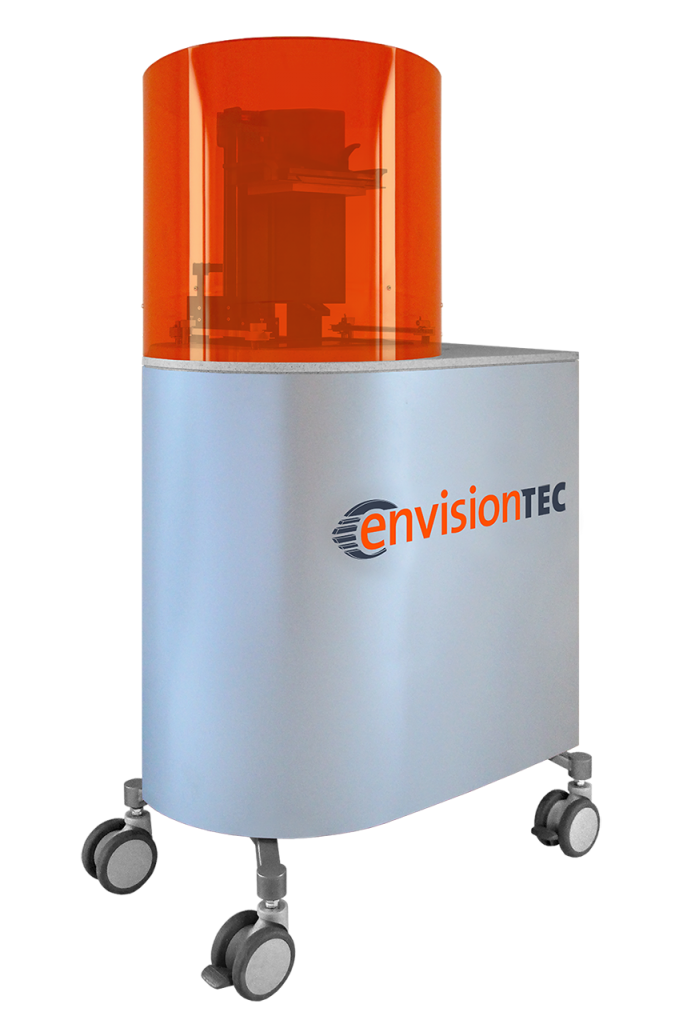 The patented bi-directional recoater technology has also been redesigned to be more compact and optimized for the new inert gas supply system.
The patented bi-directional recoater technology has also been redesigned to be more compact and optimized for the new inert gas supply system.
The NXG XII 600 features a robust design with a new thermal concept. This minimizes deflection and allows seamless monolithic parts to be printed with 12 lasers. In addition, the 3D printer is equipped with a completely new operator-oriented user interface concept, which optimizes workflow and reduces training requirements. This once again underlines the course chosen by SLM Solutions to improve performance, reliability and security. nine0003
The 3D printer is available in two powder options, gravity and vacuum, to minimize downtime between each build.
Main advantages of the new NXG XII 600 3D printer:
- Build chamber well: 600x600x600 mm
- 12 x 1 kW lasers
- Laser spot zoom function from 80 to 160 µm
- Integrated scan field division for uniform scan area distribution across all 12 lasers
- Automated Build Pit Replacement
- Automatic start of the build process
- External preheating station
- External Powder Sieving Station
- Lowest cost of production by lowering the cost of products as a result of reduced printing time.
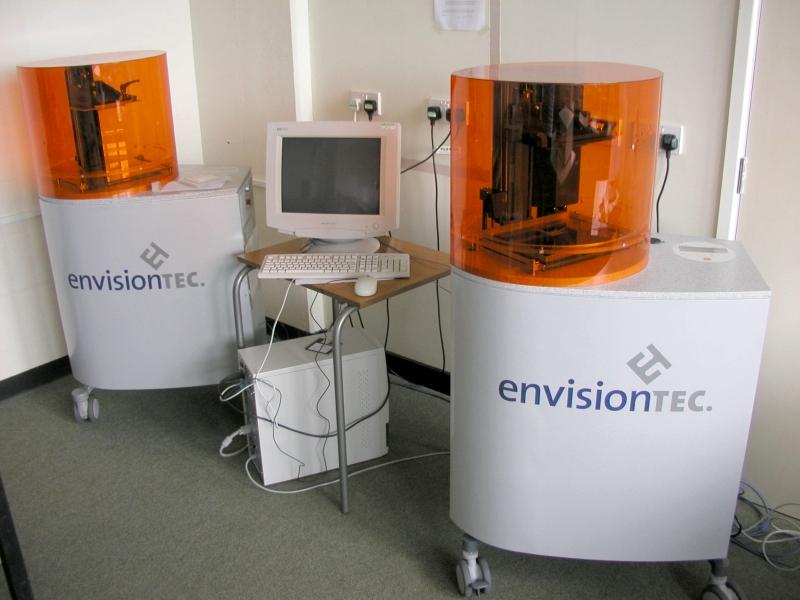
TheNXG Xll 600 is a revolution in industrial production. Until now, 3D printers with 4 lasers were considered the technological limit. The 3D printer with a total laser system power of 12 kW, which we presented today, is absolutely revolutionary. This is a big step forward not only for additive manufacturing, but for manufacturing in general. The potential cost savings and productivity boost this 3D printer offers you means that for the first time in the history of additive manufacturing, you can harness the power of mass production in your supply chain. nine0003
Sam O'Leary, COO of SLM Solutions
The NXG XII 600 3D printer is an integral part of the production cycle
automatic start of the building process, the use of an external preheating station and an external powder sieving station.
Innovative inert gas supply system enables the production of one-piece parts
For the production of parts with a monolithic structure in all parts of the build platform, SLM Solutions has developed an innovative inert gas flow system entering the build chamber through a wall made using sinter-wall technology (sintered wire wall).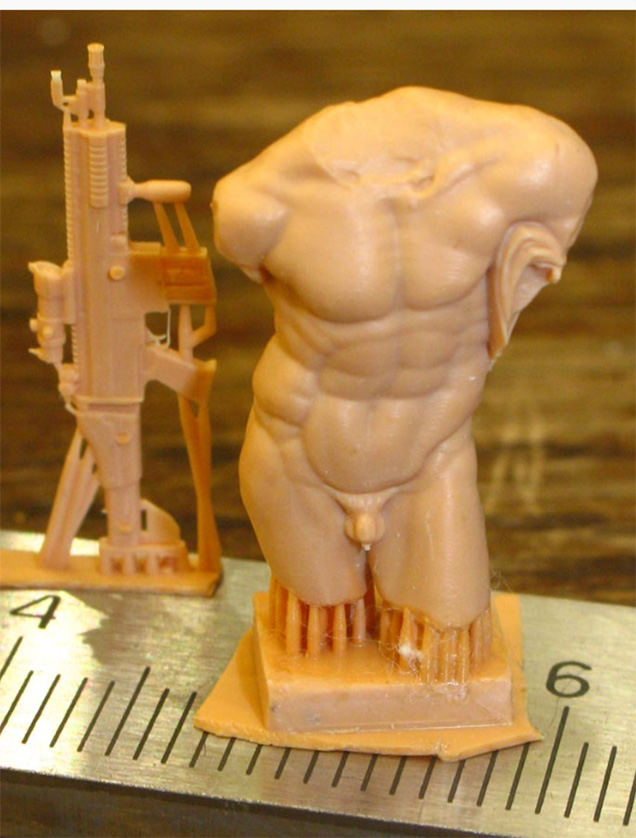 The patented bi-directional recoater technology has also been redesigned to be more compact and optimized for the new inert gas supply system.
The patented bi-directional recoater technology has also been redesigned to be more compact and optimized for the new inert gas supply system.
The NXG XII 600 features a robust design with a new thermal concept. This minimizes deflection and allows seamless monolithic parts to be printed with 12 lasers. In addition, the 3D printer is equipped with a completely new operator-oriented user interface concept, which optimizes workflow and reduces training requirements. This once again underlines the course chosen by SLM Solutions to improve performance, reliability and security. nine0003
The 3D printer is available in two powder options, gravity and vacuum, to minimize downtime between each build.
Main advantages of the new NXG XII 600 3D printer:
- Build chamber well: 600x600x600 mm
- 12 x 1 kW lasers
- Laser spot zoom function from 80 to 160 µm
- Integrated scan field division for uniform scan area distribution across all 12 lasers
- Automated Build Pit Replacement
- Automatic start of the build process
- External preheating station
- External Powder Sieving Station
- Lowest cost of production by lowering the cost of products as a result of reduced printing time.
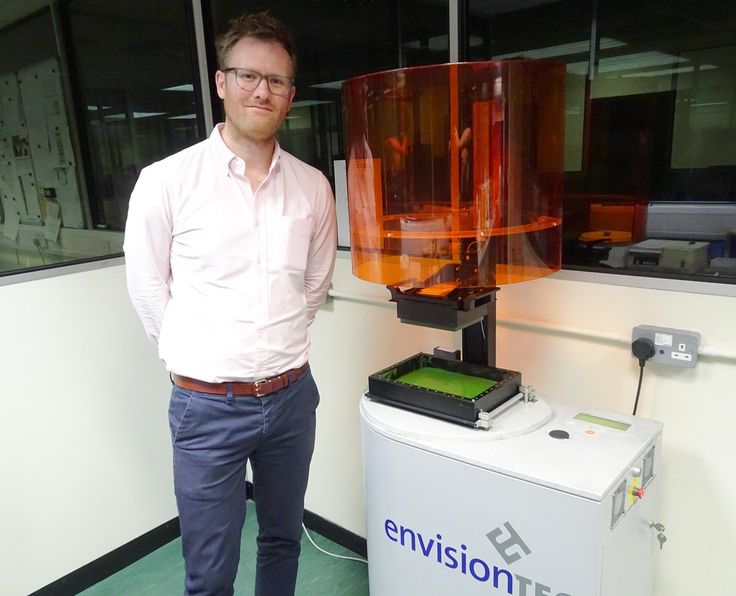
Subscribe to the newsletter
Once a month we will send you a selection of fresh articles about professional 3D printers and 3D scanners
I confirm the accuracy of the information I entered and agree to the processing of my personal data in accordance with the privacy policy and user agreement.
Is there a place for personal FDM 3D printers in production and business?
Comparison of personal and industrial 3D printers
Despite many opinions about the frivolity of personal FDM 3D printers for production tasks, they are actively used in various enterprises. Of course, in printing large-sized products with high-temperature materials, they lose to industrial 3D printers, but still they have a number of advantages. nine0003
The first and most obvious is price and availability. Compared to industrial giants with high price tags, personal 3D printers can be afforded by almost any enterprise.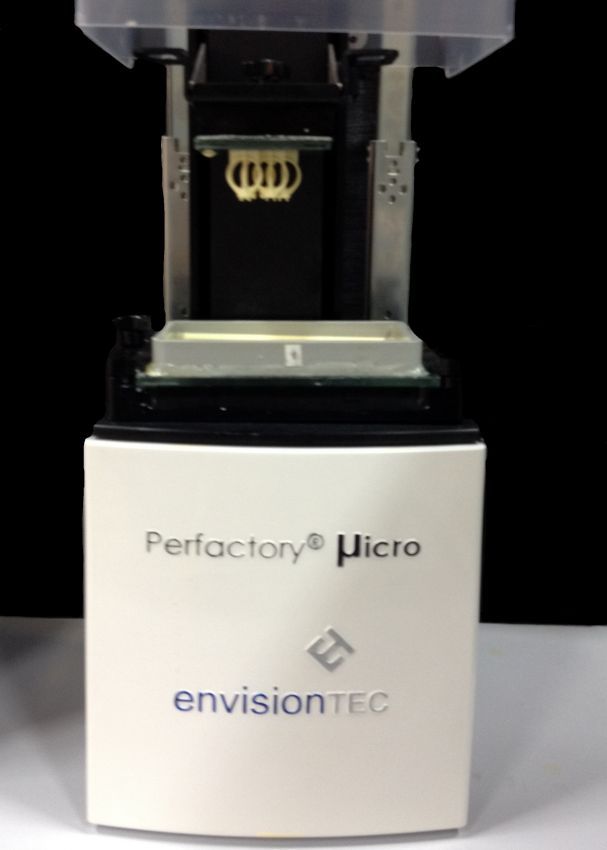 And this is the most successful solution for experimenting and evaluating the effectiveness of an idea. The low price allows you to buy several 3D printers by organizing a farm.
And this is the most successful solution for experimenting and evaluating the effectiveness of an idea. The low price allows you to buy several 3D printers by organizing a farm.
The second benefit is ease of operation and maintenance. The design and systems in personal 3D printers are simpler, which means it is easier to maintain and maintain. nine0003
The third advantage is that print materials are more affordable.
Printing materials
Industrial 3D printers are designed to work with special materials - high strength, high temperature. Such printers are equipped with a temperature-controlled chamber and a high-temperature extruder, which together make it possible to print large-sized products from special materials. These same design features make it difficult to print with such simple and affordable materials as PLA, PETG, and ABS must be of high quality. nine0003
But it is from these materials that the first prototypes are printed before the launch of the final product from a special material.
As far as personal 3D printers are concerned, high-temperature extruders have greatly expanded the list of printing materials, and on some models, such as the Hercules G2, PEKK (polyetherketone ketone) can also be printed. And this is the most productive 3D printer among personal ones, which is confirmed by the characteristics of its components. In addition, special composite materials are being developed to meet the specific requirements of different industries, such as the Clotho Filaments range of materials. Clotho Filaments are composites based on ABS, PA12, PSU. They are distinguished by increased strength, reduced shrinkage, ease of printing and high operating temperature - up to 200 degrees. nine0003
Real examples of the use of personal 3D printers in production and their benefits
Affordable price and a wide selection of materials allow the use of personal 3D printers in almost any field and for various tasks:
1) Optimization of production machines.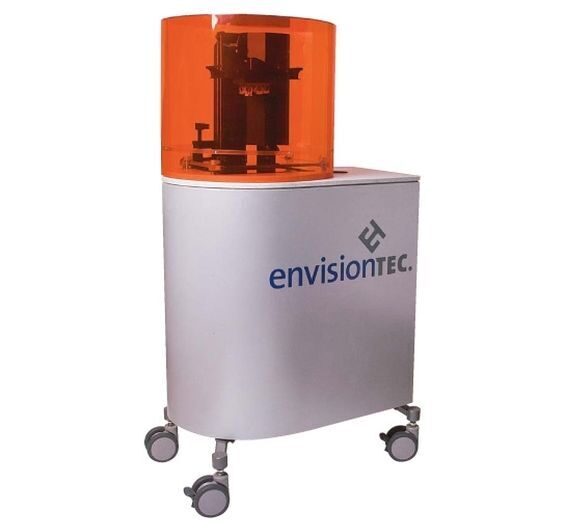
For example, ShokoBox, using the Hercules Strong 3D printer, optimized existing machines and saved money. For example, an original knife for capturing a label costs 1,500 euros, and printing such a knife costs 1,000 rubles. nine0003
2) Repair of machine tools and other equipment.
Engineering Service SPB. Printing broken machine parts reduces repair costs by 30% and reduces machine repair time by 46%.
3) Prototyping devices and finished cases.
All-Russian Research Institute of Biological Plant Protection.
Case printing allows you to reduce the cost of the final product, making it more competitive and affordable. nine0003
The cost of the body printed on a 3D printer is 2,500 rubles, The total cost of the manufactured equipment is 15,000 rubles. The cost of equipment from competitors is 36,000 rubles.
4) Making master models.
ZAO Energia is a manufacturer of pipeline fittings. He makes master models on a 3D printer. Saved 750,000 rubles by purchasing three Hercules Strong 3D printers instead of one CNC machine.
He makes master models on a 3D printer. Saved 750,000 rubles by purchasing three Hercules Strong 3D printers instead of one CNC machine.
5) Manufacture of final products or parts of devices.
OPERLY designs and manufactures high-end audio components. A 3D printer allows you to produce unique devices, as well as quickly make changes to the manufactured elements.
It cannot be said that every personal 3D printer can be used in production.
When choosing a 3D printer, consider:
- Performance. It must be fast, and the specified parameters must be confirmed by mechanics and electronics.
- He must print the declared materials.
- Nozzles must be made taking into account the printing of the declared materials.
- Ease of operation and management.
We produce three models of 3D printers that meet the requirements of industries and help you choose the best option for solving the required tasks.